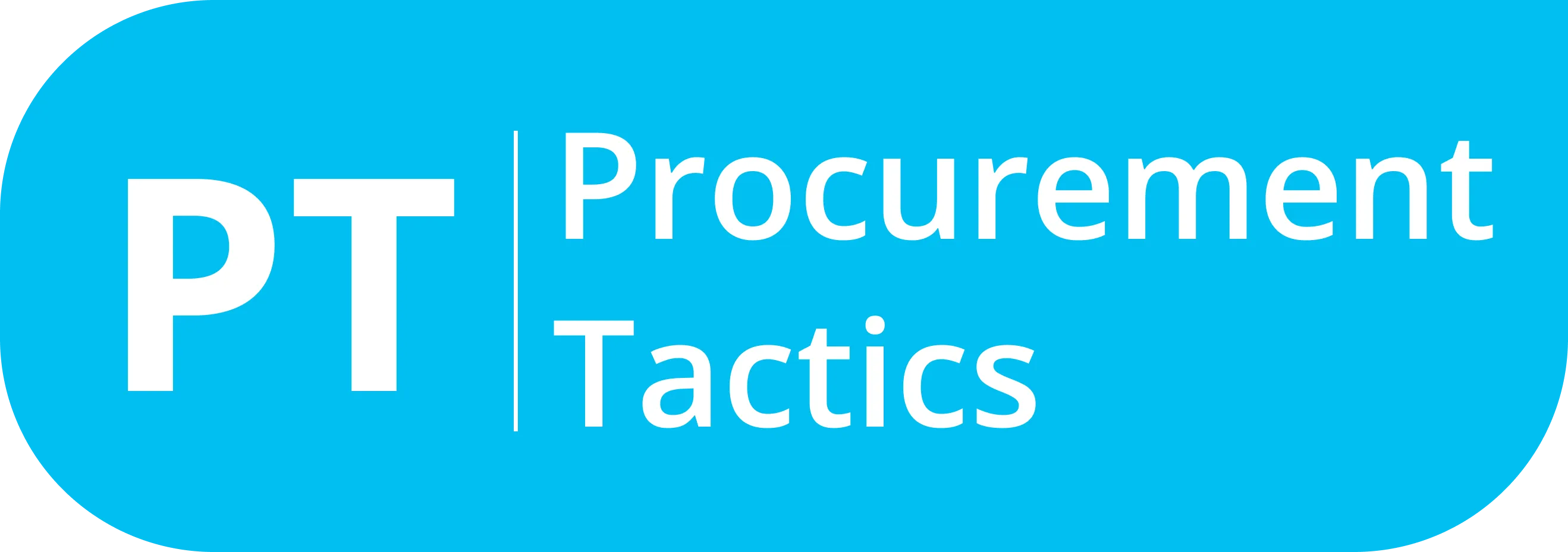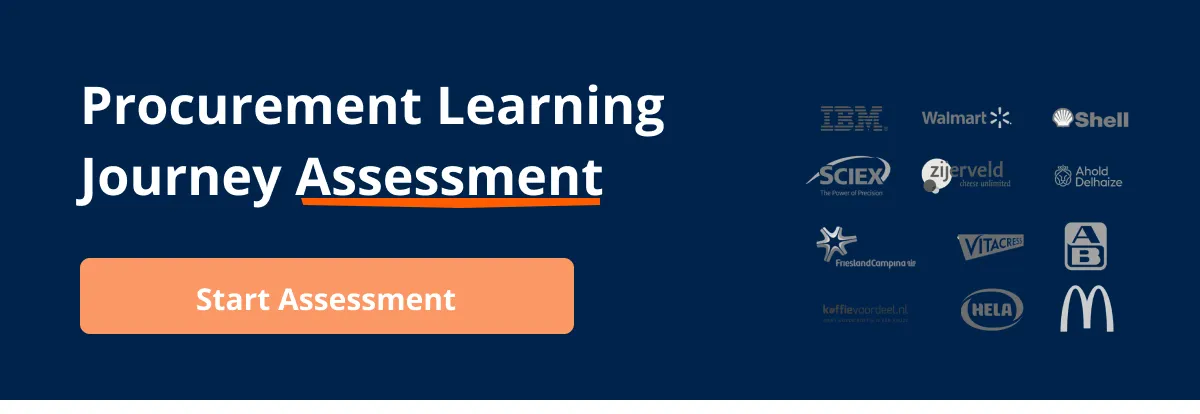Written by Marijn Overvest | Reviewed by Sjoerd Goedhart | Fact Checked by Ruud Emonds | Our editorial policy
Source-to-Pay — Everything You Should Know
Key take-aways
- Source-to-pay refers to an extensive end-to-end procurement process starting with supplier identification, evaluation, negotiation, purchasing, and ends in payment for products and services.
- Source-to-pay entails the integration of procurement platforms and systems to guarantee procedural compliance and effective cost management.
- Implementing source-to-pay practices is important for securing favorable terms and prices from suppliers.
As a procurement professional, you may have heard of the term “Source-to-Pay”. But what really is it? Why is it used interchangeably with other procurement terms? And what’s its importance in your procurement process?
For today’s article, we will explore what Source-to-Pay is and what it can provide for your organization’s procurement process.
Once you’re done reading this article, you should get an idea of how source-to-pay works and that you’ll be integrating and utilizing just like the procurement professional that you are.
What is Source-to-Pay?
Source to pay is an end-to-end comprehensive part of the procurement process that often begins with identifying, researching, and gathering potential suppliers and concludes with the payment for the acquired goods or services. It typically covers the identification of the supplier candidates, the evaluation of supplier candidates, negotiation with the selected supplier, purchasing goods and services, and ultimately paying for them.
As we can see, source-to-pay covers almost the entirety of the procurement process and thus, knowing how it works and how to utilize it, can greatly impact your organizational operations. This will involve end-to-end integration of procurement platforms and systems to ensure efficient cost management through procedural compliance.
The source-to-pay process is carried out to enable accurate spend analysis, evaluate supplier performance, and collaboration to drive business value.
Why is it important?
In order to obtain the best terms and prices from suppliers, it is necessary to establish a source-to-pay practice. Organizations find and evaluate vendors using the source-to-pay process. They’re buying up supplies, services, or software they need and paying for them. Additionally, there are numerous benefits to be derived from the implementation of an efficient source-to-pay process, contributing to increased procurement effectiveness, savings in costs, risk management, improved relationships with suppliers, and a strengthened supplier network.
Source-to-Pay vs Procure-to-Pay
Source-to-Pay covers most of the procurement process, from source selection through supplier selection to payment processing. This covers the activities, e.g. acquiring, contracting, purchasing request, order dispatch, receipt and inspection, invoice processing, and payment.
On the other hand, Purchase-to-Pay has a specific focus on purchasing and payment aspects of procurement. This shall include procurement requisition, order to be delivered, receipt and inspection, invoice processing, and payment.
Source-to-Pay (S2P) and Procure-to-Pay (P2P) are two related but distinct processes inside the bigger procurement process. While they share similarities, often being used interchangeably with one another, they cover different stages in the procurement process.
Here is an overview of the stages covered by Source-to-Pay vs Procure-to-Pay:
Source to Pay Process
Now that you have an overview of the stages in the procurement process that is covered by Source-to-Pay and Procure-to-Pay, let us now take a look at what happens at each stage:
1. Sourcing
Identifying potential suppliers, requesting proposals or bids, and selecting the best suppliers based on evaluation criteria.
2. Negotiation/Contracting
Negotiating and establishing contracts with selected suppliers, defining terms, conditions, and pricing.
3. Purchase Requisition
Creation and approval of a formal purchase requisition. This is where the generation of purchase requests is made based on the needs of different departments of the organization.
4. Purchase Order
Creation of a formal purchase order to be sent to the supplier intending to acquire the needed goods or services.
5. Purchase Order Approval
Purchase orders are now sent through an approval loop to ensure the legitimacy and accuracy of specifications. Approved purchase orders are then dispatched to suppliers. After reviewing the purchase order suppliers can either approve, reject, or start a negotiation. When an officer approves a purchase order, a legally binding contract is activated.
6. Goods Receipt & Inspection
Once the supplier delivers the promised goods/services, the buyer inspects the delivered products or services to ensure that it complies with the contract terms. The goods receipt is then approved or rejected based on the standards specified in the purchasing contract or purchase order.
7. Invoice Approval
Once a goods receipt is approved, a three-way match between the purchase order, the supplier invoice, and the receipt of the goods is performed. If there are no discrepancies found, the invoice is approved and forwarded to the finance team for payment disbursement.
8. Payment
Upon receipt of an approved invoice, payment to the suppliers is initiated. A payment made to a supplier will fall into one of the following five types: advance, partial, progress or installment, final, and holdback/retention payments.
9. Supplier Performance
After receiving the goods or services and conducting payment to the supplier. An evaluation of supplier performance is then conducted. The purpose of supplier evaluation is to ensure you partner with the best suppliers in the market and if the current supplier is meeting your organization’s specifications and requirements.
Can Source-to-Pay and Procure-to-Pay be used together?
Since both processes exist within the larger procurement process, both are able to co-exist and serve as an additional layer of security and transparency for the sourcing and payment process.
Source-to-pay achieves that by informing the strategic sourcing process and leading to more effective negotiation between buyers and vendors/suppliers and identifying savings opportunities. In order to streamline the invoicing process and eliminate any discrepancies in payments, integration of purchases and payables accounts is a primary purpose of purchase-to-pay.
Take note that since Procure-to-Pay is a subset of Source-to-Pay, it can be considered an operational part of the procurement process in which contracts are entered into and payments made. Whereas S2P relates, in addition to the work of P2Ps, both planning and operating aspects with regard to procurement, including sourcing, supplier evaluation as well as contract management.
Integrating Source-to-Pay and Procure-to-Pay can be a very valuable tool for organizations, as it creates a comprehensive and effective approach to procurement management. Organizations will be able to increase control, visibility, and efficiency of procurement operations through the use of both processes’ strengths.
Software Tools for Managing Source-to-Pay
Here are some software tools to help you in managing source-to-pay.
1. Kissflow
Kissflow is a cloud-based procurement software tool that helps businesses manage their procurement process from requisition to payment. It includes supplier management, contract management, and spending analysis.
2. SAP Ariba
SAP Ariba is a cloud bases procurement software that provides spending management, and supply chain services that allow suppliers and buyers to connect and do business, worldwide. Provides other functions such as sourcing, contracting, supplier management, and payment management.
3. Oracle
Oracle is an American multinational computer technology business, founded in 1977, that provides its customers with database software and technology, cloud-engineered systems, and enterprise software products.
4. Coupa
Coupa is an international technology platform for Business Spend Management, founded in 2006, and is built on AWS (Amazon Web Services) infrastructure which allows for it to be cloud-based and accessible to all customers. The company’s Cloud Spend Optimization SaaS product manages indirect purchases, invoices, and expenses in real time for its customers.
5. Buyer Quest
BuyerQuest offers a fully automated and online service from quote creation to shipping notifications, and invoice reconciliation. It also offers analytics, keeping your spending and behavioral data in one place to ensure your procurement process is running efficiently.
Conclusion
Understanding Source-to-Pay (S2P) is crucial for procurement professionals, encompassing the entire procurement process from sourcing to payment. Its significance lies in optimizing costs, ensuring procedural compliance, and enhancing supplier relationships.
Distinguishing it from Procure-to-Pay (P2P), both processes can coexist, with S2P offering strategic sourcing benefits and P2P focusing on operational aspects. Integrating software tools like Kissflow, SAP Ariba, Oracle, Coupa, and BuyerQuest further enhances procurement efficiency, control, and visibility for organizations.
Frequentlyasked questions
What is Source-to-Pay?
Source to pay is an end-to-end comprehensive part of the procurement process that often begins with identifying, researching, and gathering potential suppliers and concludes with the payment for the acquired goods or services.
What is Procure-to-Pay?
Purchase-to-Pay has a specific focus on purchasing and payment aspects of procurement. This shall include procurement requisition, order to be delivered, receipt and inspection, invoice processing, and payment.
Can both be used together?
Since both processes exist within the larger procurement process, both are able to co-exist and serve as an additional layer of security and transparency for the sourcing and payment process.
About the author
My name is Marijn Overvest, I’m the founder of Procurement Tactics. I have a deep passion for procurement, and I’ve upskilled over 200 procurement teams from all over the world. When I’m not working, I love running and cycling.


